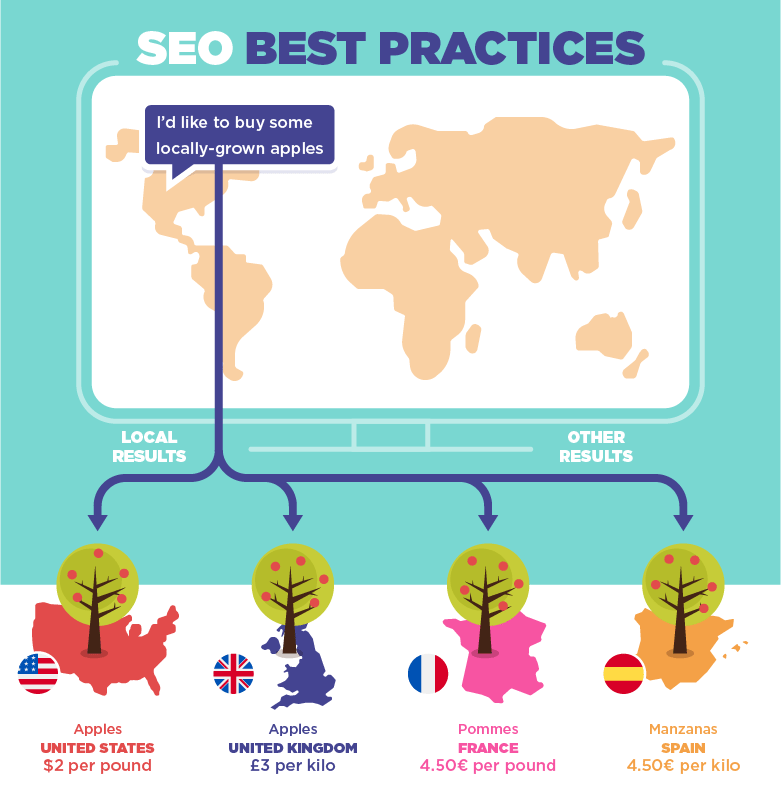Browsing the Digital Landscape: Leveraging International Search Engine Optimization for Cross-Border Success
In today's interconnected digital world, organizations are significantly looking past boundaries to tap right into worldwide markets. The complexity of navigating the digital landscape on a global range demands a nuanced method, from recognizing the principles of International Search engine optimization to executing geotargeting and multilingual search phrase techniques.
Recognizing International Search Engine Optimization Fundamentals
Navigating the complexities of worldwide search engine optimization needs a solid grasp of essential concepts to properly broaden on the internet exposure across borders. One essential aspect of global search engine optimization is understanding the importance of localization. This involves tailoring website web content to match the etymological, social, and commercial distinctions of target markets. Key words must be not just equated yet likewise adapted to show how individuals in different areas search for information.
Additionally, having a clear understanding of geo-targeting is vital. This involves suggesting to browse engines the details nations or areas a website is targeting. Executing hreflang tags is one way to interact this information, guaranteeing that the correct variation of a page appears in the search results for an individual in a specific area.
In addition, comprehending the influence of local internet search engine and social media platforms is important for global search engine optimization success. For example, while Google is leading in numerous areas, countries like China have their own internet search engine like Baidu, calling for tailored strategies for every platform to make the most of on-line presence.

Targeting Multilingual Search Phrase Strategies
Establishing multilingual keyword strategies is vital for effectively getting to diverse international audiences and making the most of on-line visibility throughout various linguistic regions. When targeting multilingual key phrase approaches, it is essential to carry out comprehensive study to understand the certain search terms and expressions used by the target audience in each etymological area. This involves not just translating keyword phrases yet likewise taking into consideration social nuances, regional dialects, and search fads unique to every target audience.
To create an effective multilingual key words approach, it is necessary to focus on importance and search intent. Key phrases ought to align with the web content on the internet site and resonate with the cultural context of the target audience. Utilizing tools such as Google Search Phrase Planner, SEMrush, or Ahrefs can aid identify high-performing key phrases in various languages and examine their search volume and competition level.
Furthermore, tracking and examining the performance of multilingual keywords on a regular basis is crucial for optimizing and improving the technique in time. By constantly adapting to changes in search actions and fads, organizations can improve their on the internet visibility and draw in even more worldwide traffic to their internet sites.
Applying Geotargeting and Hreflang Tags
When intending to improve international search engine optimization methods, integrating geotargeting and hreflang tags is important for enhancing website presence throughout different regions. Geotargeting entails tailoring material to specific areas, ensuring that customers in various locations receive relevant details. By implementing geotargeting, companies can improve their neighborhood search rankings and bring in region-specific web traffic.

Optimizing Website Structure for International Presence
To further enhance global search engine optimization techniques past geotargeting and hreflang tags, enhancing the site structure is vital for accomplishing global exposure and optimizing reach throughout various regions. A well-structured website not next just improves user experience yet likewise facilitates search engine spiders in comprehending the content and context of the website. When aiming for international exposure, it is important to ensure that the internet site is organized in a sensible way that accommodates users from various nations. Applying a clear power structure with unique categories and subcategories can help in improving the website's navigating and user-friendliness.
Furthermore, creating language-specific subdirectories or subdomains can assist search engines supply the right variation of the website to customers based upon their language preferences, even more enhancing the total user experience. Additionally, maximizing link structures to include relevant keyword phrases and geotargeted terms can boost the site's presence in different areas. By structuring the internet site efficiently for worldwide target markets, services can raise their opportunities of attracting international traffic and broadening their reach throughout boundaries.

Surveillance and Assessing Cross-Border Performance
Reliable tracking and studying of cross-border this page performance is essential for examining the success of international search engine optimization methods and determining opportunities for improvement in international reach and exposure. By closely tracking essential efficiency signs (KPIs) throughout various markets, companies can obtain useful understandings right into the effectiveness of their cross-border search engine optimization initiatives. Checking metrics such as natural web traffic, keyword rankings, conversion rates, and bounce prices can give a thorough view of exactly how well a site is doing in numerous regions.
Evaluating cross-border efficiency data enables organizations to identify trends, patterns, and areas for optimization. By contrasting efficiency throughout different countries, regions, or languages, business can determine effective techniques and localize material to much better deal with particular target market. Additionally, checking cross-border efficiency enables companies to stay dexterous and responsive in the ever-evolving digital landscape. Routine analysis of search engine optimization performance on an international range ensures that companies can adjust their strategies swiftly to take advantage of arising opportunities and maintain an one-upmanship in international markets.
Conclusion
Finally, international search engine optimization plays an essential function in accomplishing cross-border success by maximizing internet sites for worldwide visibility, targeting multilingual search phrase approaches, applying geotargeting and hreflang tags, and keeping track of cross-border efficiency. By comprehending the fundamentals of global SEO and site optimizing website structures accordingly, companies can effectively get to and involve with their target audiences throughout different areas and languages. This critical technique is necessary for increasing market reach and driving online development in today's electronic landscape.